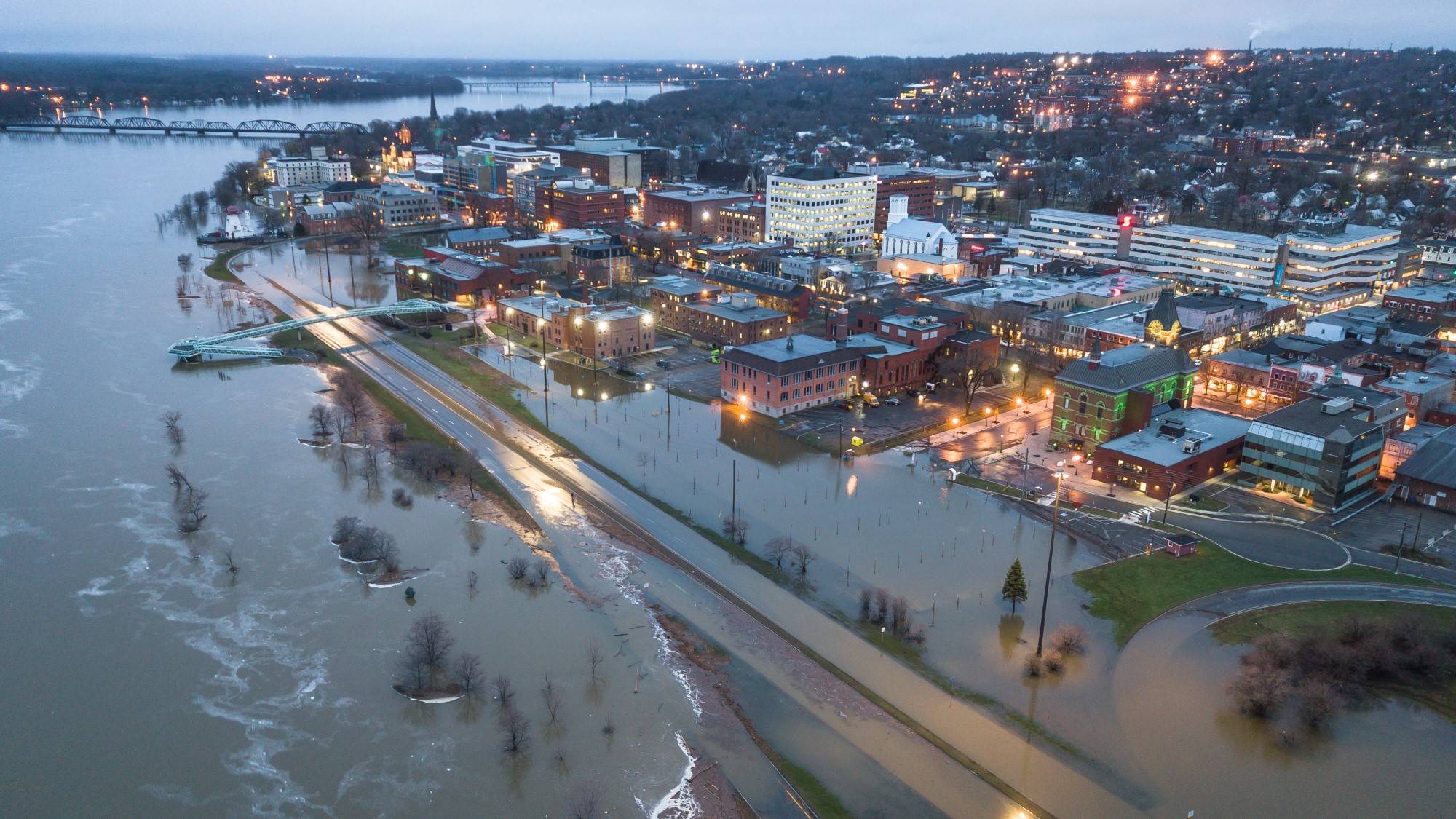Flood Alerts Explained: Protecting Your Home And Family From Flooding

Table of Contents
Types of Flood Alerts and Warnings
Different alert levels indicate varying degrees of flood risk and the urgency of action required. Familiarizing yourself with these distinctions is paramount for effective flood safety.
-
Flood Watch: A flood watch signifies that conditions are favorable for flooding. While flooding isn't imminent, it's a strong possibility. This is the time to prepare. Monitor weather reports closely and review your family's flood preparedness plan.
-
Flood Warning: A flood warning means flooding is occurring or is imminent. Immediate action is required. Evacuate if instructed by authorities.
-
Flood Advisory: A flood advisory indicates that minor flooding is occurring or is expected. While less severe than a warning, it still requires caution and awareness. Be prepared for potential disruptions to travel and activities.
Understanding these severe weather alerts and the associated urgency will help you respond appropriately to each situation. Knowing the difference between a flood watch and a flood warning can save lives and property.
How to Receive Flood Alerts
Staying informed is key. Here are several reliable ways to receive timely flood alerts and emergency alerts:
-
Weather Apps: Download reputable weather apps (e.g., AccuWeather, The Weather Channel) to your smartphone. Many offer customized alerts for your location, including flood warnings and advisories.
-
NOAA Weather Radio: A NOAA Weather Radio with Specific Area Message Encoding (SAME) technology provides continuous broadcasts of weather information, including flood alerts for your specific geographic area.
-
Local News: Keep an eye on local news channels and websites. They often provide up-to-date weather reports and emergency alerts.
-
Government Websites: Many government websites (e.g., FEMA, your state's emergency management agency) offer subscription services for various emergency alerts, including flood alerts. Sign up for these services to receive timely warnings.
Ensure you have multiple methods in place to receive flood alerts, accounting for potential outages of any single system. Regularly check your alert settings to ensure they remain accurate and up-to-date.
Creating a Family Flood Preparedness Plan
Proactive planning significantly improves your chances of surviving and recovering from a flood. A comprehensive family emergency plan should include:
- Identifying Safe Evacuation Routes: Plan multiple escape routes from your home and know where you'll go if you need to evacuate.
- Designating a Meeting Place: Choose a safe, easily accessible location for your family to meet after evacuation.
- Preparing an Emergency Kit: This kit should include essential supplies such as food, water, medications, first-aid supplies, flashlights, batteries, important documents, and a portable radio. Consider the needs of all family members, including pets.
This disaster preparedness strategy ensures everyone is aware of their roles and responsibilities during a flood emergency.
Protecting Your Home from Flood Damage
Implementing flood mitigation measures can significantly reduce the risk of water damage prevention. These include:
- Elevating Electrical Systems: Raise electrical outlets and appliances above the potential flood level.
- Installing Flood Barriers: Consider installing flood barriers around your home's foundation to prevent water from entering.
- Purchasing Flood Insurance: Even if you live in a low-risk area, flood insurance can provide crucial financial protection in case of a flood. Check with your insurance provider to understand your coverage options.
Investing in these home protection strategies can save you considerable expense and stress in the event of a flood.
What to Do During and After a Flood
During a flood warning, prioritize safety:
- Evacuate immediately if instructed by authorities.
- Move valuables to higher ground.
- Turn off utilities if it's safe to do so.
After the flood:
- Avoid contaminated water.
- Contact your insurance company to report damages.
- Seek help from local authorities or disaster relief organizations if needed.
- Be cautious when returning home, ensuring structural integrity and checking for hazards like downed power lines.
Safe and effective post-flood cleanup procedures are essential to prevent further risks and health issues.
Conclusion: Staying Safe with Flood Alerts
Understanding flood alerts and taking proactive steps to prepare is essential for flood safety and home protection. By implementing the strategies outlined in this article, you can significantly reduce your risk of flood damage and ensure the well-being of your family. Stay informed, create a comprehensive flood preparedness plan, and take preventative measures to safeguard your home. Stay informed and safe with timely flood alerts! Develop your flood preparedness plan today.

Featured Posts
-
 Bakhrein Mertsedes Vo Problemi Pred Trkata Poradi Kazni
May 25, 2025
Bakhrein Mertsedes Vo Problemi Pred Trkata Poradi Kazni
May 25, 2025 -
 Ferraris Bengaluru Service Centre A Detailed Look
May 25, 2025
Ferraris Bengaluru Service Centre A Detailed Look
May 25, 2025 -
 Florentino Perez Y El Real Madrid Un Analisis De Su Presidencia
May 25, 2025
Florentino Perez Y El Real Madrid Un Analisis De Su Presidencia
May 25, 2025 -
 Skolko Let Geroyam Filma O Bednom Gusare Zamolvite Slovo Razbor Po Rolyam
May 25, 2025
Skolko Let Geroyam Filma O Bednom Gusare Zamolvite Slovo Razbor Po Rolyam
May 25, 2025 -
 Strengthening Ties Bangladeshs Renewed European Focus On Collaboration
May 25, 2025
Strengthening Ties Bangladeshs Renewed European Focus On Collaboration
May 25, 2025
Latest Posts
-
 Swiatek Fights Back To Defeat Keys Reaches Madrid Semifinal
May 25, 2025
Swiatek Fights Back To Defeat Keys Reaches Madrid Semifinal
May 25, 2025 -
 Gauff Holds Nerve Reaches Italian Open Third Round
May 25, 2025
Gauff Holds Nerve Reaches Italian Open Third Round
May 25, 2025 -
 Italian Open Alcaraz And Sabalenkas Winning Starts
May 25, 2025
Italian Open Alcaraz And Sabalenkas Winning Starts
May 25, 2025 -
 Gauff Joins Sabalenka In Italian Open Third Round
May 25, 2025
Gauff Joins Sabalenka In Italian Open Third Round
May 25, 2025 -
 Swiateks Comeback Victory From 0 6 To Madrid Semifinal Against Gauff
May 25, 2025
Swiateks Comeback Victory From 0 6 To Madrid Semifinal Against Gauff
May 25, 2025
